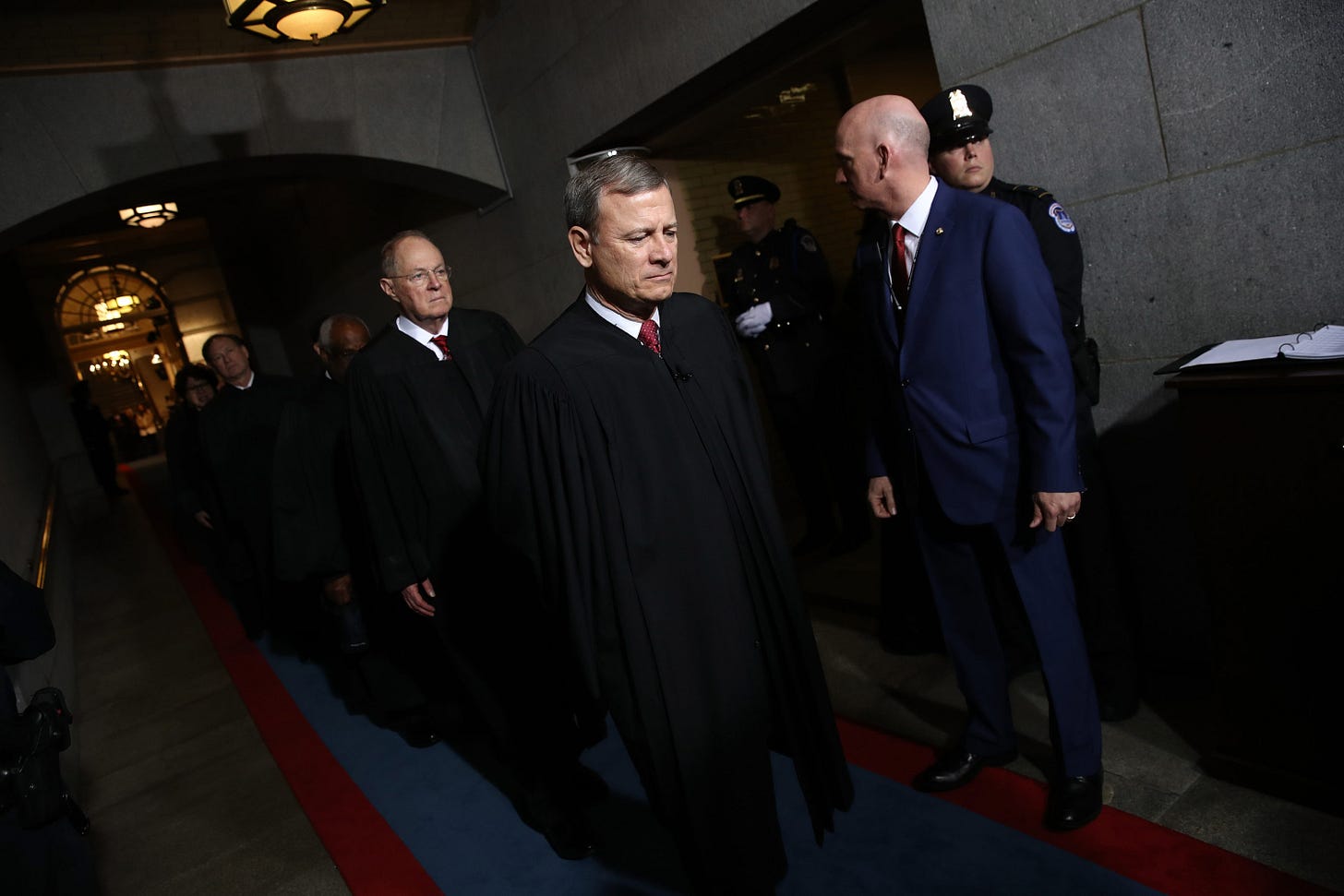SCOTUS: Not Our Job To Safeguard Democracy

Last month, Chief Justice John Roberts sent a message to the snowflakes who think it’s the Supreme Court’s job to protect our constitutional democracy: Not on my watch. Too much bother.
The case, Rucho v. Common Cause, centered around congressional elections in North Carolina. In 2012 Republicans had so manipulated the electoral map that they captured 69 percent of the state’s congressional seats with only 49 percent of the votes cast. In the 2014 election they increased the disparity, capturing 77 percent of the seats with only 55 percent of the vote.
But even that playing field was too level for members of North Carolina’s Republican party. They decided to make sure that the fix would remain in place for the next election as well. So in 2016, the North Carolina Republican Assembly ordered up a new map. They told their mapmaker to “draw a map that would produce a congressional delegation of ten Republicans and three Democrats.”
Doesn’t matter how you get there. Just get there.
And, wonder of wonders, they got exactly what they ordered. The co-chair of the redistricting committee was even dumb enough to admit that he drew the map with the aim of electing 10 Republicans and 3 Democrats only because he couldn’t find a way “to draw a map with 11 Republicans and 2 Democrats.”
North Carolina challenged this rigging of their congressional elections in the United States District Court for the Middle District of North Carolina, no hotbed of left-wing activists. They won the case. The court found that the Republicans’ partisan gerrymandering violated the First Amendment, the Equal Protection Clause of the Fourteenth Amendment, the Elections Clause, and Article I Section 2 of the Constitution.
Translation: Rigging elections is un-American.
That’s not a terribly hard concept to grasp.
Except, that is, for Chief Justice John Roberts and the other four Supreme Court justices who form the conservative wing of the Supreme Court.
Roberts conceded that “the districting plans at issue here are highly partisan, by any measure.”
And that the results of partisan gerrymandering were “unjust.”
And that such gerrymandering is “incompatible with democratic principles.”
And that the Court “does not condone” excessive partisan gerrymandering.
Yet despite all that, Justice Roberts and his “conservative” majority held that partisan gerrymandering was “beyond the reach of the federal courts.” His reasoning, to the extent it can be called that, has something to do with a hermeneutic inability to understand what “fairness” means and his belief that the task of finding a remedy is beyond his judicial capacity.
But it’s easy enough to summarize where things stand:
The United States Supreme Court doesn’t believe that a “highly partisan,” “unjust” election rigging scheme that is “incompatible with democratic principles” is incompatible with the United States Constitution.
Which is tantamount to saying that the current majority believes that it is not the job of the Supreme Court to protect our system of constitutional democracy.
Or, to put it another way, they seem believe that the Constitution is a suicide pact, after all.


